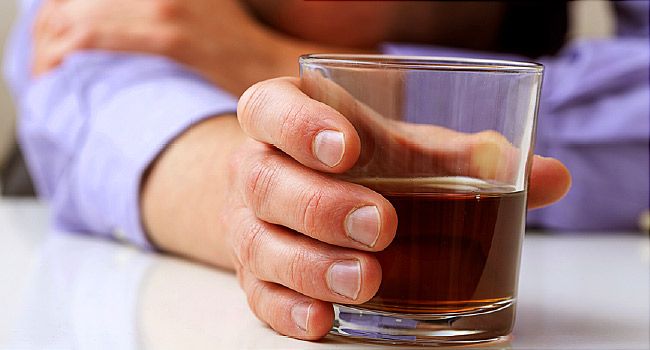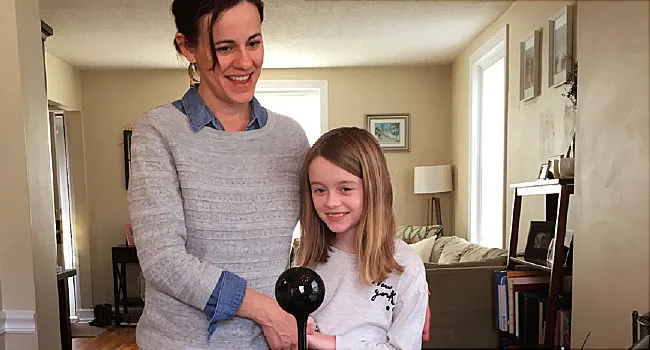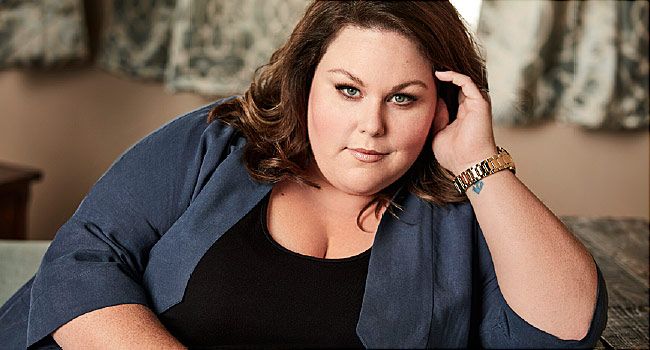
The rate of one type of risky drinking -- binge drinking -- for example, has increased for all adults aged 30 and up over the last 10 years.
From: https://www.webmd.com/mental-health/addiction/news/20180430/are-you-a-risky-drinker?src=RSS_PUBLIC
Find information about health and nutrition from various and reliable sources all over the world, in just one site. World's latest headlines all in one place.

The rate of one type of risky drinking -- binge drinking -- for example, has increased for all adults aged 30 and up over the last 10 years.

You quit smoking. Now it’s time to pay it forward and help someone else who wants to kick the habit. Do you know what will really help them, and what won’t?
The investigators found that the disease advanced more quickly among those who were very obese. This was true regardless of the level of inflammation in their joints.
Follow me on Twitter @RobShmerling
Fibromyalgia is a common condition that causes chronic body-wide pain and affects millions of people. The cause is unknown, and medications approved to treat it often aren’t effective, cause side effects, or both. To say we need better treatments for fibromyalgia is an understatement.
Non-medication treatment of fibromyalgia — especially exercise — is an essential part of treatment. But the last thing people with this condition want to do is exercise! Their pain and fatigue, so typical of this disease, make physical activity more wishful thinking than reality for most fibromyalgia sufferers. Even so, studies suggest that as long as people start “low and slow” (exercising at low intensity and for short duration, and very gradually increasing both), physical activity can be tolerated and even enjoyed.
A new study compared two types of physical activity among people with fibromyalgia: aerobic exercise (such as brisk walking, as commonly recommended) and tai chi, an ancient form of martial arts often practiced for health benefits. Past studies have demonstrated that tai chi can be effective for people with fibromyalgia.
Researchers enrolled 226 adults with fibromyalgia and randomly assigned 151 to learn and practice tai chi (once or twice a week for 12 or 24 weeks), while 75 were assigned to participate in standard “moderate intensity” aerobic exercise (twice a week for six months, with an aim of raising the heart rate during exercise to an aerobic range). Study subjects were representative of “real world” patients who varied in age, had other health problems, and took a number of medications.
Compared with aerobic exercise, study participants assigned to the tai chi groups:
Both groups reduced their use of pain relievers to a similar extent. And no serious injuries or side effects of the treatments were reported.
As is true for most treatments, there is not a single best option in all circumstances. It may not work well for those who don’t like tai chi (or don’t give it a chance), or feel they cannot participate due to poor balance, weakness, or other health problems.
In addition, the study itself is not the last word on which activities are best for people with fibromyalgia. Not everyone will have access to high-quality tai chi instructors (though in this study, results were consistent across three instructors). Skeptics will point out that since study subjects knew which treatment they were getting, the placebo effect could account for the findings. And, of course, there are countless other exercise programs that were not included in this study.
This new research suggests that instead of current recommendations to get aerobic exercise (as with taking brisk walks), tai chi might be just as good or better for many people with fibromyalgia.
In the near future, it’s likely that we’ll have better ways to diagnose and treat fibromyalgia. In addition, a better understanding of why it develops in the first place could lead to preventive approaches. Until then, I’ll keep telling my patients what I’ve been telling them for years: when fibromyalgia gets better, it’s usually because of something the patient is doing, not because of a medication I prescribed. Being physically active does seem to be a particularly necessary part of the approach. Based on the results of this latest research, tai chi may be a good place to start.
The post Aerobic exercise or tai chi for fibromyalgia–which is better? appeared first on Harvard Health Blog.
The key factors include the usual suspects: not smoking; eating healthy; exercising regularly; maintaining a normal weight; and drinking only in moderation.
The study showed those who received both organs or just a liver had fewer immune cells that respond to foreign invaders than those who only received a new kidney.
Any food can be infected with more than 250 foodborne diseases. Bacteria, parasites, viruses, chemicals, and toxins can contaminate food.
The researchers also found that in reviews by patients who had breast augmentation, their treatment by the surgeon's staff was nearly as important to them as the outcome of the surgery.
Diet soda wasn't much better. Drinking it during pregnancy was linked to poorer fine motor, visual, spatial and visual motor abilities in early childhood (around age 3). By mid-childhood (age 7), kids whose moms drank diet sodas while pregnant had poorer verbal abilities, the study findings reported.

Researchers collect red blood cells from patients, modify them so anti-cancer or other medicines can be enclosed, then inject them back into patients. The goal is improve the medicines' effectiveness while reducing harmful side effects.
It’s almost May and here in the northeast, front-of-the-pharmacy aisles are filled with myriad brands and types of sunscreen. While sunscreen is essential to lowering your risk for skin cancer, there are other simple, over-the-counter options you can incorporate into your summer skin protection routine.
Nicotinamide is a form of vitamin B3 that has been shown to reduce the number of skin cancers. In a randomized controlled trial performed in Australia (published in the New England Journal of Medicine), the risks of basal cell carcinoma and squamous cell carcinoma were significantly reduced — by 23%. Nicotinamide has protective effects against ultraviolet damage caused by sun exposure. The vitamin is safe and can be purchased over the counter. We recommended starting the vitamin (500 mg twice a day) to all our patients with a history of a basal cell carcinoma or squamous cell carcinoma, or with extensive skin damage due to sun exposure. One caveat is that the vitamin must be taken continuously, as the benefits are lost once stopped.
NSAIDs, such as ibuprofen and aspirin, may have a modest effect on skin cancer prevention. A systematic review showed that the risk of squamous cell carcinoma was reduced by 15% with non-aspirin NSAIDs, and by 18% with any NSAID. Some studies of melanoma have also shown positive results; one found a 43% reduction in melanoma with continuous aspirin for five years, while other studies have failed to show any risk reduction. NSAIDs are known to inhibit an enzyme responsible for inflammation and pain, known as COX-2, which is overexpressed in squamous cell carcinomas. A limitation to many of the studies on NSAIDs in skin cancer is that the amount of NSAID taken varied. Especially at higher doses, NSAIDs are associated with other side effects, such as ulcers, and so I do not routinely recommend that my patients take these drugs to lower skin cancer risk.
Polypodium leukotomos is a tropical fern found in Central and South America that has antioxidative, immunomodulatory, and anti-inflammatory effects, and is being marketed as an oral “sunscreen.” A recent small study of 22 patients showed that the fern extract altered the effects of UVB light (the more carcinogenic form of ultraviolet light) in 17 of the 22 patients to varying degrees. However, it is important to recognize that there are limitations to this study. First, it was unable to evaluate UVA light, which also causes skin cancer. Second, it is difficult to determine the most appropriate dose from the study. The participants received two doses of 240 mg of polypodium leukotomos two hours and one hour before ultraviolet exposure, but it is not clear how best to advise patients to use it. So, you may wonder whether I recommend this to my patients. The answer is, not yet. But I do plan to try the extract myself and on my husband (who has a history of skin cancer) this summer. Just keep in mind, this does not replace sunscreen and sun-protective clothing.
Although alcohol is not a classic “over-the-counter” product, it has been in the spotlight in the past year, as alcohol is estimated to be responsible for 3.5% of all cancer deaths. Two meta-analyses suggested an association between skin cancer and alcohol intake. One study found that the risk of basal cell carcinoma increased by 7% and squamous cell carcinoma by 11% for every standard beer or small glass of wine each day. Another study showed a 20% increase in melanoma in drinkers, and the risk increased with the number of drinks. However, these studies didn’t take into account other factors that could affect the results, some of which cannot be measured. One example is that ultraviolet light is the main factor that increases basal cell carcinoma and squamous cell carcinoma, and alcohol consumption has been associated with behaviors that increase one’s risk of getting a sunburn. So what is the recommendation? The American Cancer Society recommends limiting alcohol consumption to one drink per day for women and two drinks per day for men.
Since we have yet to find a magic pill that completely prevents sunburns and eliminates skin cancer risk, this is my plug for good old-fashioned sunscreen. Sunscreen has been shown to reduce both melanoma and squamous cell carcinoma. Randomized prospective studies in Australia showed that individuals who used daily sunscreen had a 50% reduction in melanoma and a 40% reduction in squamous cell carcinoma, compared to individuals who used sunscreen intermittently. So when the sun and warm weather beckon, remember to apply a broad-spectrum sunscreen with at least SPF 30 prior to going out in the sun, reapply every two hours, and apply liberally: 1 teaspoon to each arm, head and neck, front torso, and back; and 2 teaspoons to each leg.
The post 4 ways to protect against skin cancer (other than sunscreen) appeared first on Harvard Health Blog.
The new estimate means that autism rates have more than doubled since 2000, the researchers reported.
The observed change in vision was small, but significant. However, the study authors stressed that it's too early for ophthalmologists to recommend chocolate as medicine for the eyes.
BRCA1 and BRCA2 gene mutations put women at high risk for breast and ovarian cancers, but these mutations also increase men's risk for certain cancers.
By Michelle Manchir
https://www.ada.org/en/publications/ada-news/2018-archive/april/may-jada-researchers-seek-longterm-solutions-to-access-after-studying-mission-of-mercy-events
The Codman pump is implanted in the abdomen and sends high doses of chemotherapy directly into the liver for cancer that has spread there, typically from colorectal tumors, The New York Times reported.
The researchers specifically looked to see which drug was better at restoring blood flow to clot-blocked blood vessels in the brain, and which drug resulted in patients having better outcomes.
Last fall, more than 912,000 pounds of prescription drugs were turned in at more than 5,300 Take Back Day sites operated by the DEA and nearly 4,300 state and local law enforcement partners.
If you’re confused by the terms used to describe heart attacks, you’re not alone. They’re often described as “mild” or “massive,” or even the ominous-sounding “widow maker.” But these terms are not necessarily helpful, and they may create confusion and anxiety.
The good news: most people who have a heart attack survive. The bad news? “Any heart attack can be fatal, no matter how big, how small, or where it occurs in the heart,” says Dr. James Januzzi, a cardiologist at Harvard-affiliated Massachusetts General Hospital. “Furthermore, there’s a lot of misunderstanding among the general public about what a heart attack actually is,” he says.
Perhaps the most common source of confusion is the difference between a heart attack and cardiac arrest. A heart attack (what doctors call a myocardial infarction or MI) is defined as damage to part of the heart muscle caused by inadequate blood flow to that area. Most of the time, this happens due to a blockage in one of the heart’s arteries. Known as a type 1 heart attack, such blockages typically occur when cholesterol-laden plaque lining an artery ruptures. A clot forms, obstructing the vessel.
While a heart attack is a plumbing problem, a cardiac arrest is an electrical problem. Cardiac arrest happens when the heart’s electrical system malfunctions, causing it to beat rapidly and chaotically — or to stop beating altogether. Without blood circulating to the brain, lungs, and other organs, the person gasps or stops breathing and becomes unresponsive within seconds.
A heart attack is a common cause of cardiac arrest, but most heart attacks do not lead to cardiac arrest. Other possible causes of cardiac arrest include heart failure, a clot in the lungs, a serious imbalance of potassium, magnesium, or other minerals in the blood, a drug overdose, or a blow to the chest.
Some heart attacks cause more harm than others. During a heart attack, blood levels of a protein released by damaged muscle (troponin) give some sense of severity. Afterwards, an ultrasound of the heart (echocardiogram) can reveal the extent of the damage. “A large heart attack will significantly reduce the squeezing strength of the heart muscle,” says Dr. Januzzi.
The term “widow maker” refers to a heart attack caused by a blockage near the top of the left anterior descending (LAD) artery, the main artery that supplies blood to the front of the heart. However, heart attacks that involve the LAD are not necessarily fatal, and those involving other arteries can be deadly, too.
Call 911 right away if you or someone near you has symptoms of a heart attack or cardiac arrest. Common heart attack symptoms include:
Signs of cardiac arrest are a sudden loss of responsiveness and abnormal breathing (either not breathing or only gasping). Give hands-only cardiopulmonary resuscitation (CPR) until help arrives.
The post Heart attack versus cardiac arrest appeared first on Harvard Health Blog.
Illnesses include 18 cases in Pennsylvania, 13 cases in California, 10 in Idaho, seven cases each in Montana and New Jersey, five cases each in Alaska and Arizona, three in Ohio, two cases each in Colorado, Connecticut, Michigan, New York and Washington, and a single case each in Georgia, Illinois, Louisiana, Missouri, South Dakota and Virginia.
The study found no difference in the risk for premature birth, low birth weight or other serious complications among those who didn't receive TDF and those who got TDF along with emtricitabine and lopinavir/ritonavir.
According to the U.S. Centers for Disease Control and Prevention, the national suicide rate rose by 24 percent between 1999 and 2014 -- from 10.5 deaths per 100,000 people, to 13 per 100,000.
The people with restless legs syndrome also had a decrease in the brain region where nerve fibers connect the two sides of the brain, according to the study published online April 25 in the journal Neurology.
A new study suggests some preterm births occur because the fetus rejects the mother, after its immune system is triggered too early and senses maternal cells as foreign invaders.

Currently, hospitals must make their prices public, but the new rule requires the information to be posted online in a format that can be easily processed by computers, the Associated Press reported.
In the long-term, irregular periods can also increase the risk of endometrial cancer, the researchers pointed out in the new report.
High levels of physical activity were associated with a lower risk of depression in all age groups during the follow-up, the investigators found.
In the study, Aminoshariae's team reviewed more than 460 published studies and found that a combination of 400 milligrams of ibuprofen (such as Advil or Motrin) and 1,000 milligrams of acetaminophen (Tylenol) was more effective than opioid medications (for example, Vicodin, Oxycontin) for adults.
Overall, "the number of U.S. births to females aged 10 to 14 was a record low in 2016, dropping to 2,253 from 8,519 in 2000," a team from the U.S. Centers for Disease Control and Prevention wrote.
In the United States, nearly 30 million adults are affected by sleep apnea. This condition occurs when the upper airway repeatedly collapses during sleep, resulting in snoring and daytime sleepiness.
Anxiety can raise the risk for heart disease: Previous studies have shown that arterial stiffness may be worsened by traumatic life events, job strain, depression and either short-term or chronic anxiety, the researchers said.
Follow me on Twitter @RobShmerling
People search for information on a wide variety of health topics in Google and other search engines. That’s no surprise.
But I was surprised to learn that “apple cider vinegar weight loss diet” was among the fastest-rising health topic searches for Google in 2017. And then I found out that apple cider vinegar has been used medicinally for centuries!
Why the renewed interest? And, more importantly, does it work?
Apple cider vinegar comes from apples that have been crushed, distilled, and then fermented. It can be consumed in small quantities or taken as a supplement. Its high levels of acetic acid, or perhaps other compounds, may be responsible for its supposed health benefits. Although recommendations for “dosing” vary, most are on the order of 1 to 2 teaspoons before or with meals.
For thousands of years, compounds containing vinegar have been used for their presumed healing properties. It was used to improve strength, for “detoxification,” as an antibiotic, and even as a treatment for scurvy. While no one is using apple cider vinegar as an antibiotic anymore (at least, no one should be), it has been touted more recently for weight loss. What’s the evidence?
Studies in obese rats and mice suggest that acetic acid can prevent fat deposition and improve their metabolism. The most widely quoted study of humans is a 2009 trial of 175 people who consumed a drink containing 0, 1, or 2 tablespoons of vinegar each day. After three months, those who consumed vinegar had modest weight loss (2 to 4 pounds) and lower triglyceride levels than those who drank no vinegar. Another small study found that vinegar consumption promoted feeling fuller after eating, but that it did so by causing nausea. Neither of these studies (and none I could find in a medical literature search) specifically studied apple cider vinegar.
In all, the scientific evidence that vinegar consumption (whether of the apple cider variety or not) is a reliable, long-term means of losing excess weight is not compelling. (On the other hand, a number of studies suggest that vinegar might prevent spikes in blood sugar in people with prediabetes and type 2 diabetes by blocking starch absorption — perhaps that’s a topic for another day.)
For many natural remedies, there seems to be little risk, so a common approach is “why not try it?” However, for diets with high vinegar content, a few warnings are in order:
If you are trying to lose weight, adding apple cider vinegar to your diet probably won’t do the trick. Of course, you’d never suspect that was the case by the way it’s been trending on Google health searches. But the popularity of diets frequently has little to do with actual evidence. If you read about a new diet (or other remedy) that sounds too good to be true, a healthy dose of skepticism is usually in order.
The post Apple cider vinegar diet: Does it really work? appeared first on Harvard Health Blog.
In the United States, nearly 30 million adults are affected by sleep apnea. This condition occurs when the upper airway repeatedly collapses during sleep, resulting in snoring and daytime sleepiness.
At ages 8 to 12 and 15 to 20, all three groups were similar in terms of IQ, memory and several other measures of brain function, according to the study authors.

Affecting just 1 in every 20 million people, progeria is driven by a genetic mutation that results in a vast surplus of a protein known as progerin.
Unfortunately, the findings also suggest that much of this youthful advantage fades with age.
Flexible sigmoidoscopy looks at about a third of the colon, as compared to the whole colon as is seen in colonoscopy. But unlike colonoscopy, sigmoidoscopy does not typically require sedation.

You’ve heard of dogs sniffing out hidden drugs, explosives, or missing people. Can some of our four-legged friends spot cancer by its scent, too?
Researchers found that compared with nondrinkers, those who drank relatively heavily had fewer "good" bacteria in their mouths. They were also hosting more "bad" bacteria -- including bugs that have been linked to gum disease, heart disease and cancer.
Anxiety can raise the risk for heart disease: Previous studies have shown that arterial stiffness may be worsened by traumatic life events, job strain, depression and either short-term or chronic anxiety, the researchers said.
The new guidelines, issued by the academy, took into account studies on MS drugs and concluded that it's best to start use of MS drugs as early as possible.
The study from Germany found that the technology used to power the cars won't interfere with pacemakers or implantable defibrillators.

Bush has a form of Parkinson's disease and uses a wheelchair and electric scooter. In recent years, he has been hospitalized several times for respiratory problems, the AP reported.
The researchers also estimated that about 21 percent of PMS cases might be attributed to alcohol use among American and European women, whose drinking rates are especially high.
And one expert noted that caffeine itself may not be the culprit, since many of the women in the study consumed it by drinking sodas and eating candy.

Pediatric brain disease patients the latest to gather data for clinical trials from the comfort of their own home.
The researchers noted that previous studies have shown that dehydration reduces exercise performance and brain function in young people, but less is known about its impact on seniors.
The sweeping advisory came after information tied to some new illnesses prompted health officials to caution against eating all kinds of romaine lettuce that came from the city of Yuma, Ariz., where the outbreak began.
The annual rate of exposures skyrocketed by nearly 1,400 percent from 2012 to 2015, then fell by 20 percent from 2015 to 2016, the researchers said.
These scares are common. They affect about half of women who get annual mammograms; almost one-quarter of those who get regular stool tests for colon cancer; and 10 to 12 percent of men who have regular prostate cancer tests, the researchers said.
The researchers used the images to assess how precisely the radiation was delivered, and to determine if it shifted closer or farther away from the heart.
The mucus was analyzed for cytokines, which are proteins that enable cells to talk to each other. Based on the cytokines findings, the researchers categorized the patients into six different groups.

Actor Chrissy Metz, star of the wildly popular NBC television series This Is Us, talks about overcoming childhood difficulties, anxiety, and other setbacks.

Marcia Gay Harden talks about her mother's Alzheimer’s disease, the latest 50 Shades movie, age, fitness, and Hollywood.
Pharmacology has changed the practice of medicine. Scientists are continually working on new and better drugs to manage medical conditions, from high blood pressure to autoimmune diseases to cancer. The mechanism of a drug — how it actually works on the condition it is mean to treat — is one important factor, but drug delivery, meaning how the medication arrives at the target it is meant to affect, is also key.
As a patient, it’s your right to understand everything about a medication prescribed for you. That doesn’t mean you have to become a scientist or pass an exam about pharmacology. But you can and should ask your doctor to explain to you why she has selected this medication for you, how it works, and what side effects you should expect. An article in Pharmacy World and Science explores what medications mean to patients and why it’s important to think about these concepts. Do I need this medicine? How will it impact my body? What control do I have over the effects of the drug?
No matter what the health condition is, there is always more than one choice of medication to treat it. Ask why the one your doctor recommends is the best choice for you. You want to know what the medicine is expected to do and how that will be monitored. Will you be expected to keep a log of your pain, symptoms, blood pressure, or blood sugars? Is this a medicine your doctor has used before and is familiar with? It’s a red flag if he says, “Well, I haven’t tried it before with a patient, but it seems like the right choice.”
Sometimes a physician will try a drug that is new to the market, but you need to know exactly what makes this medicine special for your condition. Be wary of medicines that are “brand name only.” That means they are newer to medical practice, will likely be more expensive, and that there is less experience using them. Sometimes, a newer brand name drug is a great choice, but if your doctor just heard about it and isn’t yet familiar with potential side effects and clinical response, you need to know that.
Morning or evening? Empty stomach or after a meal? What if you miss a dose? Can you have a glass of wine while taking this medicine? Is it okay to drink grapefruit juice (which interacts with many medicines)? Will you need to “titrate up” (meaning to increase slowly until you get to the right dose)?
All drugs have potential side effects, even acetaminophen (Tylenol). Fatigue, weight gain, and headache are common, but there are lots of others. Some drugs can make your urine turn a different color — scary unless you know to expect it. Your GI system may move more quickly, resulting in diarrhea. Hair loss is an unpleasant drug side effect that can sometimes be prevented by taking supplements with the medicine. Tremor is another side effect that can limit how much of a medicine you’re able to tolerate.
Whatever you experience is real, so make sure you keep a list and let your doctor know. Anyone can be allergic to a medicine (and sometimes it’s just a simple rash that fades when you stop the drug), but a more serious and potentially life-threatening side effect is anaphylaxis. That means that you can actually stop breathing as your body goes into crisis mode. Don’t ignore any new symptoms when you start a drug.
It’s often useful to keep a list of questions in a notebook you take to medical appointments, or on your phone. Phone apps are great ways to track responses and side effects, so be sure to ask about options. Make sure you have all the answers about your medication, including how long you’re expected to try it before an adjustment or change.
Medicine can be life-altering. Taking medication prescribed for you can help you feel better or prevent health problems down the road (or both). But if a drug isn’t working for you or you are concerned about new symptoms or side effects, speak up. Your doctor needs to know in order to change the drug or dose, or consider other options.
New choices offer patients incredible options to improve their health. Your job is to understand your medicine and to tell your doctor if you can’t tolerate it or don’t want to take it. Medication adherence starts with you, but treatment is a partnership, so ask the questions you need to understand your treatment.
Understanding the meaning of medications for patients: The medication experience, Pharmacy World and Science, January 2008.
The post How to talk to your doctor about medication appeared first on Harvard Health Blog.
The new review looks back at more than 40 investigations conducted worldwide between 1991 and 2016. It concludes that -- like other types of addiction -- internet gaming disorder is a complex condition that arises when fun morphs into a loss of control, turning into an obsession.